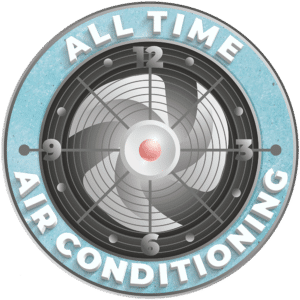Breathe Easier: Tips for Preventing Mold in Your Home’s HVAC System
The Importance of Indoor Air Quality
Indoor air quality is essential to the health and well-being of everyone in your home. Poor indoor air quality can lead to a range of respiratory problems, particularly for those who suffer from allergies or asthma. One of the main causes of poor indoor air quality is mold growth in your home’s HVAC system. Mold spores are airborne contaminants that can cause severe allergic reactions, including sneezing, coughing, and shortness of breath.

Regular Maintenance Is Key
The best way to prevent mold growth in your home’s HVAC system is through regular maintenance. This includes changing air filters every three months, cleaning ducts annually, and scheduling routine inspections with a professional HVAC technician. By keeping your system clean and well-maintained, you can reduce the likelihood of mold growth and improve indoor air quality.
- Change air filters every three months
- Clean ducts annually
- Schedule routine inspections with a professional HVAC technician
Upgrade Your System
If you’re concerned about mold growth in your home’s HVAC system, consider upgrading to a newer model that includes advanced features designed to prevent mold growth. Some high-end systems come equipped with UV lights that kill bacteria and mold spores before they have a chance to circulate through your home. Other systems include HEPA filters that trap even the smallest airborne particles, including mold spores.
Learn more about upgrading your HVAC system here.
Control Humidity Levels
Mold thrives in moist environments, so keeping humidity levels under control is crucial to preventing mold growth in your home’s HVAC system. Aim for a relative humidity level between 30% and 50%, which will help keep mold at bay. You can monitor humidity levels with a hygrometer, available at most hardware stores.

Seal Leaks and Cracks
Air leaks and cracks in your home’s ductwork can allow moisture to seep into your HVAC system, creating an environment ripe for mold growth. Inspect your ductwork regularly for signs of damage or wear and tear. Seal any leaks or cracks promptly to prevent moisture from entering your system.
Learn more about ductwork repair and maintenance here.
Add Indoor Plants
Indoor plants not only add beauty to your home but can also help improve indoor air quality by absorbing harmful pollutants such as mold spores and other allergens. Some of the best plants for improving indoor air quality include spider plants, peace lilies, and Boston ferns.
- Spider plants
- Peace lilies
- Boston ferns

Conclusion
By following these practical tips for preventing mold growth in your home’s HVAC system, you can breathe easier and alleviate allergy symptoms caused by exposure to airborne contaminants such as mold spores. Regular maintenance, upgrades, controlling humidity levels, sealing leaks and cracks, and adding indoor plants are all effective methods for keeping your HVAC system free from harmful allergens.
Contact Alltime Air Conditioning today to schedule a routine inspection or upgrade to a newer model that includes advanced features designed to prevent mold growth in your HVAC system.










Leave a Reply
Your email is safe with us.